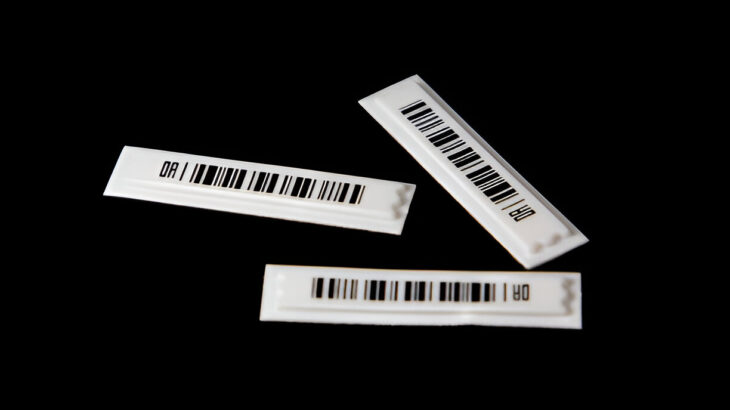How Security Labels counterfeit products are a big problem in many industries. They can hurt businesses, deceive customers, and even be dangerous. Thankfully, security labels help fight counterfeiting by making it easy to tell if a product is fake. In this article, we will explain how security labels prevent counterfeit products and keep consumers safe.
What Are Security Labels?
Security labels are special stickers or tags placed on products to protect them from tampering and counterfeiting. These labels include features that make it easy for customers and businesses to verify the authenticity of a product.
Some common types of security labels include:
- Tamper-Evident Labels: These labels show clear signs if someone tries to remove or alter them.
- Holographic Labels: These labels use 3D images that are difficult to copy.
- QR Code Labels: Scannable codes that allow consumers to check the product’s authenticity online.
How Do Security Labels Prevent Counterfeit Products?
1. Tamper-Evident Labels Show If a Product Has Been Altered
Tamper-evident labels are designed to leave behind a message or broken pieces when someone tries to peel them off. This makes it obvious if a product has been tampered with, signaling to the buyer that the product may no longer be safe or genuine.
- Example: A bottle of medicine with a tamper-evident seal will show a “VOID” message if the seal is broken, letting consumers know it may have been opened or replaced with a counterfeit product.
2. Holographic Labels Make It Hard to Copy Products
Holographic security labels are 3D labels that change appearance depending on the angle of light. They are difficult to replicate, which makes them a powerful tool in preventing counterfeiting.
- Example: High-end electronics, such as smartphones, often come with holographic security labels to prove they are genuine and not counterfeit.
3. QR Code Labels Provide Easy Verification
Many security labels include QR codes, which consumers can scan with their smartphones. When scanned, the QR code takes customers to a website where they can verify the product’s authenticity. This extra layer of security allows businesses to engage with customers and offer more information about their products.
- Example: A luxury watch may have a QR code that, when scanned, leads to a page where the customer can confirm that the watch is real and has not been faked.
4. RFID Tags Help Track Products Throughout the Supply Chain
Radio-frequency identification (RFID) tags are another form of security label. These tiny, invisible tags are attached to products and can be scanned by businesses at various points in the supply chain. RFID helps businesses track the location and authenticity of each product, making it much harder for counterfeit items to slip into the system.
- Example: An RFID tag on a pair of designer shoes allows the company to track the shoes from the factory to the store, making sure no counterfeit pairs are sold.
5. Unique Serial Numbers and Barcodes Help Identify Authentic Products
Some security labels include unique serial numbers or barcodes that help identify products. These numbers are registered in a company’s database, so when customers scan the code, they can see exactly where the product was made and whether it’s real.
- Example: A bottle of perfume might have a serial number that customers can enter on the brand’s website to confirm that the perfume is authentic.
Why Are Security Labels Important in Preventing Counterfeiting?
1. Protects Consumers
Counterfeit products can be harmful, especially in industries like food, medicine, and cosmetics. Fake medicines can cause serious health problems, and counterfeit electronics can be dangerous to use. Security labels help prevent these harmful products from reaching consumers.
2. Safeguards Businesses and Brands
Counterfeiting can lead to lost sales and damage a company’s reputation. When customers buy counterfeit goods, they may associate the fake product with the real brand, causing harm to the business. Security labels protect businesses by ensuring only genuine products are sold.
3. Builds Trust with Customers
When customers see that a product has a security label, they feel more confident in their purchase. They know that the product is authentic, safe, and of high quality. This trust is essential for businesses that want to keep their customers happy and loyal.
4. Reduces Financial Losses
Counterfeiting can result in huge financial losses for companies. Fake products can steal market share and cause a company to lose revenue. Security labels help businesses protect their income by preventing counterfeit goods from entering the market.
Industries That Benefit from Security Labels
- Pharmaceuticals:
Security labels ensure that medicines are genuine and safe for use. Counterfeit drugs can have dangerous consequences. - Electronics:
High-value electronics are common targets for counterfeiters. Security labels help prove that products like smartphones, laptops, and cameras are authentic. - Fashion and Luxury Goods:
High-end brands like designer clothing and handbags use security labels to protect their reputation and prevent counterfeit products from being sold. - Food and Beverage:
Tamper-evident labels are crucial for food products to ensure that they haven’t been tampered with or altered.
Conclusion
Counterfeit products are a growing concern for businesses and consumers alike. However, security labels provide an effective solution to prevent counterfeiting and ensure product authenticity. From tamper-evident seals to QR codes and RFID tags, security labels make it easier for customers to trust the products they buy.
Investing in security labels not only protects your brand and your customers but also shows your commitment to quality and safety. By using security labels, businesses can fight counterfeiting and create a safer, more reliable marketplace.
